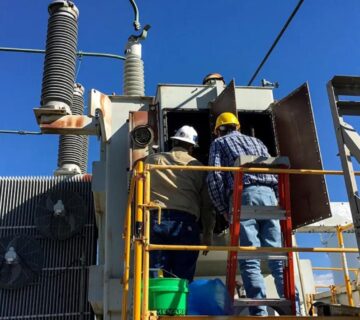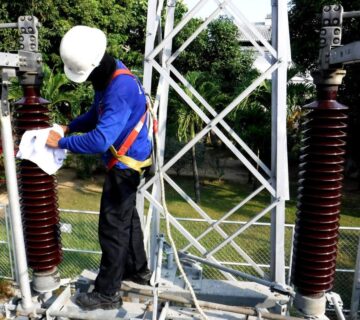Dissolved Gas Analysis (DGA), or gas-in-oil testing, is an essential assessment technique for determining the condition of your power transformers. Transformer DGA testing identifies gases that are dissolved in the transformer oil, which can identify internal electrical faults before catastrophic failure occurs. The gases that are typically found are by-products of the breakdown of the insulating oil and cellulose insulation as a result of electrical and thermal stress.
1. Why Transformer DGA Testing?
A failure of a power transformer is a costly and drastic event. Power transformers are crucial equipment in electrical transmission and distribution systems. If a transformer fails, it could prevent a large geographical area from receiving power, which can lead to significant downtime, damage to other equipment, or even pose risks to human safety. DGA testing can provide early indicators of (but are not limited to) these signs of electrical deterioration:
- Excessive overheating
- Electrical arcing
- Partial discharges
- Degradation of the insulation
- Following monitoring service parameters (via DGA tests) allows for defects to be diagnosed early, in a proactive fashion, and improve the possibility of successful intervention and further avoid unplanned downtime.
2. How Transformer DGA Testing Works
- Oil Extraction: A technician extracts transformer oil through industry-standard sampling methods.
- Gas Extraction: The gases dissolved in the oil are extracted using specialized equipment.
- Gas Chromatography: The extracted gases undergo an analysis to determine the type of gases, and their quantities.
- Fault Diagnosis: The results are interpreted using a standard, such as IEC 60599 or IEEE C57.104, to classify possible transformer faults.
3. Benefits of Ongoing DGA Testing
- Fault discovery at an early stage: Discover issues before they escalate
- Cost savings: Spare costly repair or replacement
- Increased safety to mitigate the risk of explosive transformers
- Life extension of assets: Better maintenance planning and prolonging equipment life
4. Best Practices for Transformer DGA Testing
- Establish baseline testing done right after installation
- Routine testing (for example yearly or every 6 months)
- Results are compared over time; one can analyze for trends
- Implement use of online DGA monitors for real-time diagnostics for critical systems
Conclusion
DGA testing of transformers is an integral step in an electrical utility and industrial predictive maintenance program. Analysis of gases from transformer oil provides insight into the internal condition of transformers, leading to better decisions and preventing failures that can be costly.








No comment